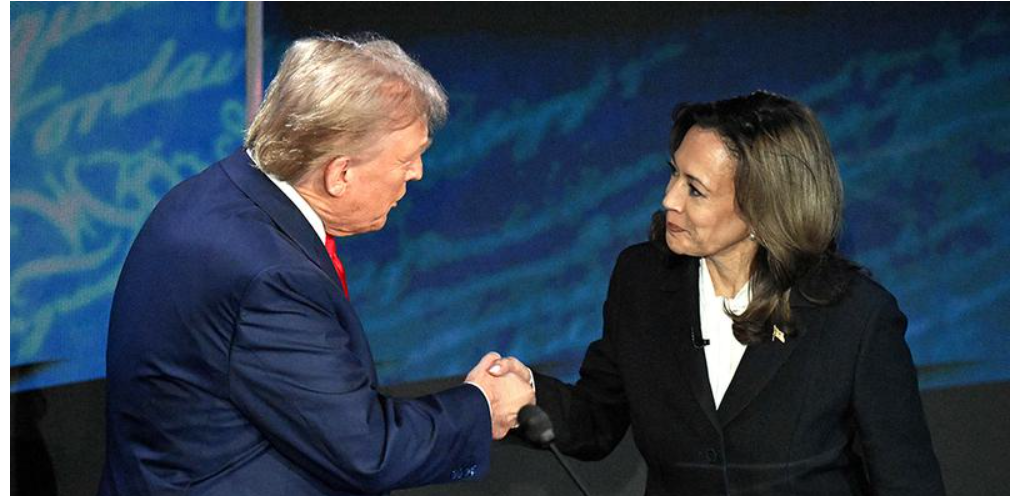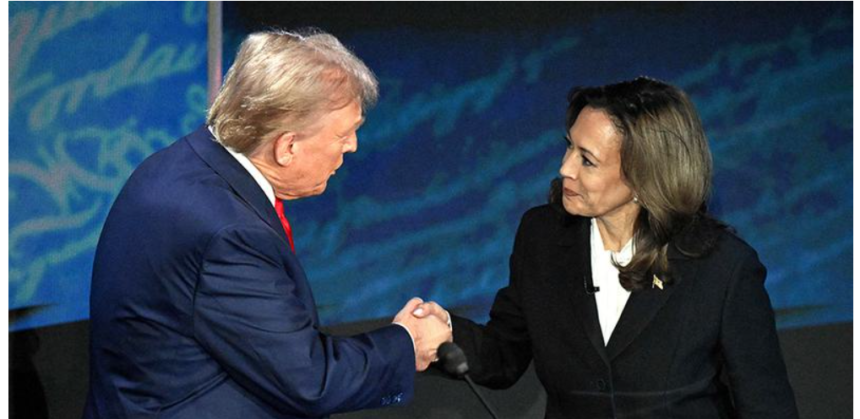As the Abortion or Immigration political landscape in many nations evolves, two contentious issues consistently dominate the discourse: abortion and immigration. Both topics evoke strong emotions, differing opinions, and fierce debates among citizens, policymakers, and advocacy groups. The framing of these issues can significantly influence public perception, voting behavior, and ultimately the direction of legislation. This article delves into the nuances of how abortion and immigration are framed in political contests, the historical context surrounding each issue, their impact on electoral politics, and the strategies employed by different parties to gain an advantage.
1. Understanding the Issues: Abortion and Immigration
1.1 Abortion: A Battle for Rights and Morality
Abortion has been a polarizing issue for decades, centering around women’s reproductive rights, bodily autonomy, and moral considerations. The debate often juxtaposes the right to choose against the right to life, with advocates on both sides presenting compelling arguments.
- Pro-Choice Movement: This group advocates for a woman’s right to make decisions about her body, emphasizing the importance of access to safe and legal abortion services. They argue that restrictions on abortion disproportionately affect low-income women and women of color, further entrenching social inequities.
- Pro-Life Movement: This faction seeks to protect the unborn, often citing moral and religious grounds. They argue that life begins at conception and advocate for policies that restrict or ban abortion.
1.2 Immigration: A Complex Web of Policies and Human Rights
Immigration encompasses a wide range of issues, including border security, refugee resettlement, work visas, and pathways to citizenship. Like abortion, immigration is a multifaceted debate that intertwines economic, social, and humanitarian concerns.
- Pro-Immigration Advocacy: Supporters argue that immigrants contribute significantly to the economy, fill labor shortages, and enrich cultural diversity. They advocate for more humane immigration policies and pathways to citizenship for undocumented individuals.
- Anti-Immigration Sentiment: Opponents often frame immigration as a threat to national security, economic stability, and cultural identity. They call for stricter border controls, deportation of undocumented individuals, and policies that prioritize native citizens in job markets.
2. Historical Context of Abortion and Immigration in Political Discourse
2.1 The Evolution of Abortion Rights
The history of abortion rights in many countries, especially the United States, has been marked by significant legal battles and shifting social attitudes.
- Roe v. Wade: In 1973, the landmark U.S. Supreme Court case Roe v. Wade legalized abortion, establishing a woman’s right to choose. This ruling ignited intense debate and activism, leading to the formation of pro-choice and pro-life movements.
- Recent Developments: The 2022 Supreme Court decision to overturn Roe v. Wade has reignited the abortion debate, prompting states to enact restrictive laws. This shift has mobilized voters and activists on both sides, making abortion a key issue in political contests.
2.2 Immigration Policy Evolution
Immigration policy has also undergone significant changes over the years, influenced by economic conditions, security concerns, and social movements.
- Immigration and Nationality Act of 1965: This legislation abolished racially discriminatory quotas and expanded immigration from non-European countries. The act led to increased diversity in immigrant populations, reshaping societal dynamics.
- Post-9/11 Security Measures: Following the September 11 attacks, immigration policies became more stringent, with increased emphasis on national security. The establishment of the Department of Homeland Security and various immigration enforcement measures reflected this shift.
3. Framing the Contest: Political Strategies and Messaging
3.1 Political Parties and Issue Framing
Both major political parties in the United States, as well as other nations, have adopted distinct strategies for framing abortion and immigration, often tailoring their messaging to resonate with their core constituencies.
- Democratic Party: Generally aligning with pro-choice and pro-immigration stances, Democrats emphasize women’s rights and the contributions of immigrants to society. Messaging often focuses on compassion, equality, and the importance of protecting vulnerable populations.
- Republican Party: Republicans typically champion pro-life positions and stricter immigration controls. Their messaging frequently emphasizes national security, traditional values, and the economic implications of immigration policies.
3.2 Media Influence on Framing
The media plays a crucial role in shaping public perceptions of abortion and immigration, often influencing how these issues are framed in political contests.
- Language and Terminology: The choice of words can significantly impact how issues are perceived. For instance, using terms like “pro-choice” versus “pro-abortion” can sway public opinion. Similarly, referring to immigrants as “undocumented workers” versus “illegal aliens” influences the tone of the discussion.
- Coverage and Narratives: Media coverage can amplify specific narratives, often reflecting the biases of outlets. Some outlets may focus on emotional stories of individuals affected by abortion restrictions or immigration policies, while others may emphasize statistics and broader implications.
4. The Role of Activism and Grassroots Movements
4.1 Grassroots Mobilization on Abortion Rights
The pro-choice movement has seen significant grassroots mobilization, particularly in response to recent legal developments. Activists employ various strategies to advocate for abortion rights:
- Protests and Demonstrations: Nationwide protests have erupted following restrictive abortion laws, showcasing widespread support for reproductive rights. These events serve to galvanize public opinion and put pressure on policymakers.
- Educational Campaigns: Organizations engage in educational efforts to inform the public about reproductive health, the implications of restrictive laws, and the importance of access to abortion services.

4.2 Immigration Advocacy and Activism
Similarly, immigration advocacy has gained momentum, with grassroots organizations working to promote more humane policies:
- Community Organizing: Local organizations mobilize communities to advocate for immigrant rights, providing resources and support for individuals navigating complex immigration processes.
- Coalition Building: Various groups, including labor unions, faith-based organizations, and social justice advocates, collaborate to amplify their voices and push for comprehensive immigration reform.
5. Electoral Impact: Abortion and Immigration in Political Campaigns
5.1 Mobilizing Voters through Abortion Rights
Abortion rights have become a significant electoral issue, influencing voter turnout and preferences in elections:
- Swing States: In key battleground states, candidates’ positions on abortion can sway undecided voters. Pro-choice advocates emphasize the importance of protecting reproductive rights, framing it as a matter of personal freedom and health.
- Youth Engagement: Younger voters, particularly women, are increasingly mobilized by abortion rights issues. Candidates who champion reproductive rights may gain traction among this demographic, impacting electoral outcomes.
5.2 Immigration as a Polarizing Factor
Immigration remains a divisive issue that can energize voter bases on both sides of the political spectrum: 
- Mobilizing Base Voters: Anti-immigration rhetoric can galvanize conservative voters, motivating them to participate in elections. Candidates who advocate for stricter immigration controls may find support from constituents concerned about border security and national identity.
- Shifting Demographics: As demographics change, particularly with increasing Latino populations in various states, immigration policies and rhetoric can influence electoral outcomes. Candidates who embrace pro-immigration stances may resonate with these communities, leading to increased support.
6. The Intersection of Abortion and Immigration
While abortion and immigration are often framed as distinct issues, they intersect in meaningful ways that warrant consideration:
6.1 Reproductive Rights for Immigrant Women
The debate also extends to immigrant women, who may face unique challenges in accessing reproductive healthcare. Language barriers, legal status, and cultural stigmas can hinder access to safe abortion services. Advocates argue that immigrant women deserve the same reproductive rights and protections as citizens.
6.2 Political Alliances
Progressive movements often recognize the interconnectedness of various social justice issues. Advocates for both abortion rights and immigration reform may find common ground in their commitment to human rights and equity. Collaborative efforts can amplify their voices and broaden support for both causes.
7. Conclusion: Navigating the Complex Landscape
As political contests continue to unfold, the framing of immigration will remain critical in shaping public discourse and influencing electoral outcomes. The strategies employed by political parties, advocacy groups, and the media will play a pivotal role in determining how these issues are perceived by the public.
In this race to frame the contest, it is essential to recognize the historical context, the impact of grassroots movements, and the intersectionality of these issues. As citizens engage in the political process, understanding the nuances of abortion and immigration will empower them to make informed decisions and advocate for policies that align with their values.
Ultimately, the future of these issues will depend on the ability of advocates, policymakers, and citizens to engage in constructive dialogue, challenge existing narratives, and work toward solutions that promote justice, equity, and the rights of all individuals. In a world marked by division and polarization, fostering understanding and collaboration will be essential to navigating the complex landscape of abortion and immigration in the years to come.
ALSO READ:- EU Members Must Recognize Gender Changes Achieved in the Bloc 2024





